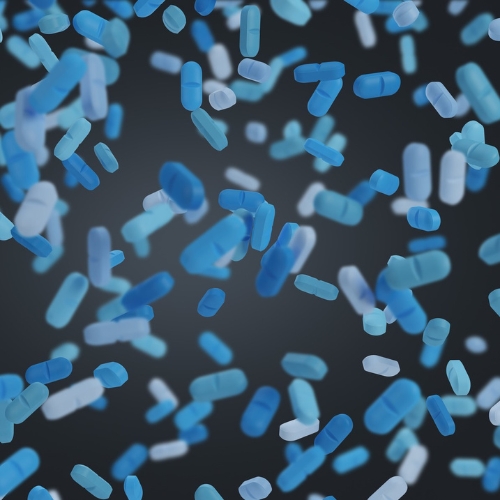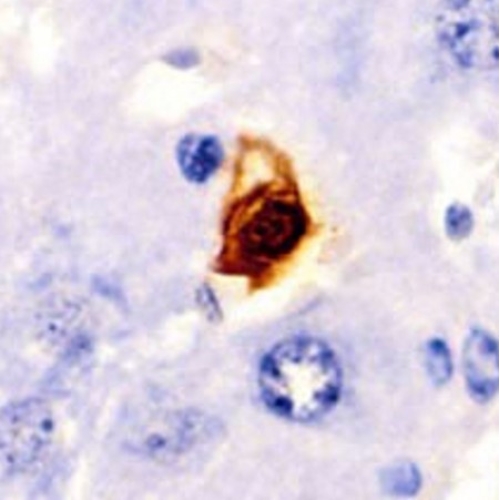Ageing brings gradual cellular decline. Among the many hallmarks of ageing, cellular senescence plays a major role. Senescent cells stop dividing but remain metabolically active. They release inflammatory signals that harm nearby healthy cells. This secretory behavior, called the senescence-associated secretory phenotype (SASP), fuels age-related diseases.
Scientists now explore ways to suppress SASP without killing senescent cells. Such treatments are called senomorphics. The 2025 study in Ageing Cell reveals that Urolithin A (UA), a gut-derived compound from pomegranates, berries, and nuts, acts as a promising senomorphic molecule. It reduces pro-inflammatory signals and controls damage-related responses.
Let’s explore how UA works and why this discovery matters for healthy ageing.
Understanding the Language of Senescence
Senescence serves as the body’s emergency brake. When a cell experiences DNA damage or stress, it halts division to prevent cancer. Yet, this protective pause has side effects. Senescent cells secrete SASP factors—cytokines, enzymes, and damage molecules—that disturb tissue balance. Over time, these inflammatory signals drive inflammaging, a persistent low-grade inflammation tied to ageing.
Along with SASP, senescent cells also release damage-associated molecular patterns (DAMPs). These molecular signals alert the immune system, but persistent release keeps the body in an inflamed state. Thus, ageing tissues often show chronic inflammation even without infection.
Suppressing these molecules could reduce age-related tissue damage without harming normal immune defense.
Urolithin A: From Diet to Defense
Urolithin A comes from ellagitannins and ellagic acid—compounds found in plant foods like pomegranates, walnuts, and raspberries. Gut bacteria transform these substances into UA. People who produce more UA naturally may experience better mitochondrial health and lower inflammation.
Earlier studies showed UA improved muscle endurance and mitochondrial performance in older adults. Animal models also revealed its ability to enhance cellular cleanup and reduce inflammation. The new Aging Cell study extends this knowledge by testing whether UA can directly suppress the pro-inflammatory SASP and DAMPs released by senescent cells.
The Experiment: Fighting Senescence in the Lab
Researchers used human lung fibroblast cells called IMR-90 to model senescence. They triggered senescence using doxorubicin, a chemotherapy drug that causes DNA damage. Nearly all treated cells turned senescent, confirmed by blue senescence-associated beta-galactosidase (SA-β-gal) staining shown in the images.
The team compared three conditions:
Normal dividing cells.
Senescent cells from doxorubicin exposure.
Senescent cells grown with Urolithin A.
The results were striking. UA did not stop cells from becoming senescent, meaning it was not senolytic—it didn’t kill them. But it changed how these cells behaved. Senescent cells treated with UA produced fewer inflammatory signals, showing its senomorphic potential.
UA Reduces Cellular Stress Without Killing Cells
Senescent cells express checkpoint inhibitors like p16INK4A and p21CIP, which lock the cell cycle. UA treatment did not significantly lower these genes. This confirmed that UA did not reverse senescence but changed the cell’s inflammatory profile.
Microscopy images show fewer DNA-damage foci and better nuclear organization in UA-treated cells. Although these differences were modest, they suggested reduced internal stress. Importantly, UA did not harm cell viability. Both normal and senescent cells survived equally well under UA treatment.
This balance—protecting cells while reducing inflammation—is the essence of a senomorphic effect.
Tackling Inflammation: Lowering SASP Factors
When the team measured SASP cytokines, they found strong effects. UA dramatically reduced levels of interleukin-6 (IL-6), interleukin-8 (IL-8), and interleukin-1α (IL-1α). These are classic pro-inflammatory SASP components. They promote tissue degradation, immune activation, and fibrosis.
Graphs show a clear decline in these cytokines after UA treatment. The same trend appeared across different fibroblast types, proving the effect was consistent.
Tests confirmed that UA-treated cells secreted fewer cytokines into the culture medium. This means UA not only silenced inflammatory genes but also reduced their release into the surrounding environment.
Calming the Spread of Senescence
SASP does more than inflame tissues—it spreads senescence. Cytokines like IL-6 and IL-8 can make nearby cells stop dividing. This “paracrine senescence” accelerates tissue ageing.
Researchers collected conditioned media from senescent cells, both with and without UA. They then exposed healthy fibroblasts to this media. Cells exposed to untreated senescent media turned senescent quickly. However, those exposed to UA-treated media stayed mostly healthy.
This experiment proved that UA can block the chain reaction of senescence. It interrupts harmful communication between cells, protecting surrounding tissue from inflammatory damage.
The Secret Weapon: Targeting the cGAS–STING Pathway
The scientists next searched for how UA achieved this anti-inflammatory effect. Their focus turned to a crucial immune pathway called cGAS–STING.
Inside cells, double-stranded DNA belongs in the nucleus or mitochondria. When fragments leak into the cytoplasm, the enzyme cGAS detects them and triggers the STING protein. STING then activates transcription factors like NF-κB and IRF3, launching inflammation and interferon responses.
In ageing cells, damaged DNA often escapes into the cytoplasm. This triggers chronic STING activation and fuels SASP production. In the study, senescent fibroblasts displayed clear cytosolic DNA foci under microscope images, confirming this leakage.
UA reduced these extranuclear DNA foci dramatically. Data show fewer cytosolic DNA spots and lower levels of phosphorylated STING after UA treatment. This evidence indicates UA interrupts the cGAS–STING inflammatory circuit.
Blocking DAMPs: Controlling the Alarms
Senescent cells release DAMP molecules like HMGB1—proteins that escape the nucleus and act as distress signals. High HMGB1 outside the nucleus correlates with ageing and inflammation.
Images reveal fewer cells with nuclear HMGB1 loss after UA treatment. In simple terms, UA kept this molecule where it belonged. This reduces inflammatory signaling at its source.
Thus, UA acts as a double-shield: preventing DNA from leaking into the cytosol and keeping HMGB1 inside the nucleus. Both actions quiet the cell’s internal alarm system.
Confirming the Pathway Link
To confirm UA acts through cGAS–STING, researchers combined it with a known STING inhibitor called 9-nitro-oleic acid. This compound blocks STING activation. When used alone, it lowered SASP gene expression. Adding UA on top did not produce further reduction.
This finding suggests both molecules act on the same pathway. Therefore, UA likely suppresses SASP by limiting STING signaling rather than by unrelated mechanisms.
A Story of Mitochondria and Mitophagy
Beyond inflammation, mitochondria—our cellular power plants—play a central role in senescence. With age, mitochondria become dysfunctional and release mitochondrial DNA into the cytoplasm. This also activates cGAS–STING, perpetuating inflammation.
Urolithin A is well known for stimulating mitophagy, the selective recycling of damaged mitochondria. By promoting mitophagy, UA can prevent mitochondrial DNA leakage and maintain energy balance.
UA improved mitochondrial function in aged models, increasing muscle strength and endurance. It also preserved T-memory stem cells, vital for long-term immune resilience.
Although the current study did not find significant changes in mitochondrial potential within senescent fibroblasts, the authors suggest UA’s effects may vary depending on cell type and damage source.
Why Senomorphics Matter
Most anti-ageing research once focused on senolytics, drugs that remove senescent cells. While promising, senolytics can harm normal cells or trigger side effects. Senomorphics, in contrast, modify senescent cell behavior. They silence harmful signals without destroying cells.
UA fits this category. It reduces inflammation and DAMP signaling while preserving cell structure. This approach could minimize tissue damage and maintain normal repair processes.
The concept of using dietary compounds as senomorphics offers safer, more accessible interventions. Since UA naturally forms from common foods, it may offer a nutritional route to managing cellular ageing.
Connecting Gut Health and Longevity
The gut–ageing link gains new strength from UA’s origin story. The human gut microbiome converts plant polyphenols into UA, but not everyone produces it efficiently. The ability depends on gut bacterial composition.
People lacking the right bacteria might not benefit fully from pomegranate or walnut intake. Therefore, direct UA supplementation may provide a solution for non-producers.
This discovery ties gut health, diet, and cellular ageing into one continuous system. Maintaining a diverse microbiome could improve the body’s own production of protective metabolites like UA.
Toward Therapeutic Application
The paper’s findings point to UA as a novel senomorphic strategy. By reducing cytosolic DNA and calming cGAS–STING signaling, UA attacks the root cause of inflammaging.
Future studies could test its effectiveness in animal models of neurodegeneration, cardiovascular disease, and muscle decline—conditions heavily influenced by SASP activity.
Clinical trials are already exploring UA’s role in muscle health. Expanding these studies to inflammation and immune ageing could confirm its broader benefits.
The Broader Impact on Ageing Research
UA research highlights a shift in anti-ageing science. Instead of merely removing damaged cells, scientists now aim to modulate them. This approach may better preserve tissue harmony.
The discovery also connects metabolic and immune regulation. By controlling mitochondria and cytosolic DNA, UA bridges energy metabolism and inflammation control.
Such insights could inspire combination therapies where UA complements other senomorphics or autophagy-enhancing drugs.
Summary of Core Findings
Urolithin A suppresses SASP and DAMP signals.
It lowers IL-6, IL-8, and IL-1α production in senescent fibroblasts.
UA reduces cytosolic DNA accumulation.
It inhibits cGAS–STING pathway activation.
It prevents paracrine senescence.
It maintains nuclear integrity.
It preserves cell viability.
These results suggest UA acts as a natural molecular switch—turning off harmful ageing signals while maintaining essential cell functions.
Visual Insights from the Study
Images show blue SA-β-gal staining confirming senescence. UA-treated samples appear less intense.
Graphs reveal decreased expression of inflammatory cytokines after UA exposure.
Charts illustrate fewer extracellular DNA foci and lower STING activation under UA treatment.
Supplementary data confirm similar effects in other fibroblast types and consistent DNA protection.
These visuals strengthen the claim that UA directly targets the inflammatory machinery of senescent cells.
Looking Ahead: The Promise of Nutritional Geroscience
This study contributes to a growing field called nutritional geroscience—the use of dietary molecules to modulate ageing. UA embodies this concept. It links nutrition, microbiome metabolism, and cellular longevity.
By identifying natural senomorphics like UA, scientists hope to design safer therapies. These could delay onset of age-related disorders while enhancing quality of life.
Since UA already shows safety in human trials, translating these cellular insights into clinical practice may come soon. Supplements could one day complement lifestyle measures like exercise and balanced diet to maintain cellular youth.
The Delicate Balance of Ageing Intervention
Completely removing senescent cells might not always be ideal. Senescence also aids wound healing and prevents cancer. Therefore, controlling rather than eliminating these cells can maintain homeostasis.
UA’s selective suppression of harmful signals respects this balance. It quiets the inflammatory chatter while leaving protective mechanisms intact. This nuanced modulation reflects nature’s approach—subtle correction rather than harsh elimination.
Future Directions in Research
The authors recommend several next steps:
- Animal validation to confirm tissue-wide benefits.
- Long-term safety evaluation.
- Microbiome mapping to identify efficient UA producers.
- Combination therapy with senolytics or autophagy inducers.
These directions could advance UA from laboratory promise to medical reality.
Why This Discovery Matters for You
Ageing affects everyone, but understanding its biology empowers prevention. The idea that compounds from simple foods like pomegranates can influence cellular ageing reshapes how we view nutrition.
Instead of targeting ageing only through drugs, we can harness natural metabolism. Supporting a healthy gut and including UA-producing foods might nurture anti-inflammatory resilience over time.
While more research is needed, UA exemplifies how lifestyle and biology meet in the quest for longevity.
Conclusion: Urolithin A as a Cellular Peacemaker
The 2025 Aging Cell study positions Urolithin A as a new class of senomorphic compound. It doesn’t erase senescence but transforms its behavior. By reducing cytosolic DNA release and silencing the cGAS–STING pathway, UA turns chaotic inflammatory cells into quieter, more stable neighbors.
This subtle reprogramming aligns with the body’s natural rhythm. Instead of fighting ageing destructively, UA teaches cells to age gracefully.
In the larger narrative of longevity science, such discoveries move us closer to personalized, nutrition-based therapies. The path forward may not rely solely on synthetic drugs but also on the wisdom hidden in natural metabolites.
Urolithin A, born from our gut’s collaboration with plants, stands as a bridge between diet and cellular renewal—a reminder that healthy ageing often begins in the simplest choices on our plate.
The study is published in the journal Aging Cell. It was led by researchers from Lifespan Research Institute.






